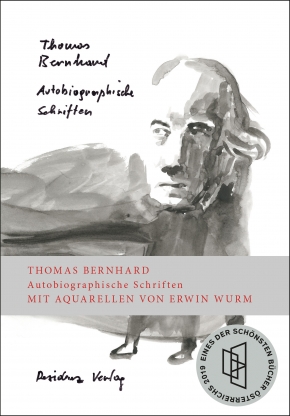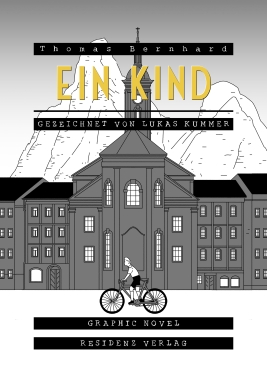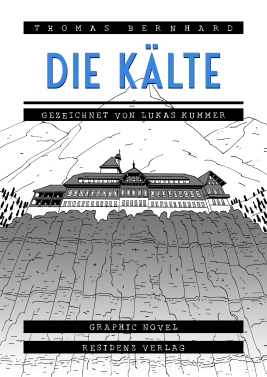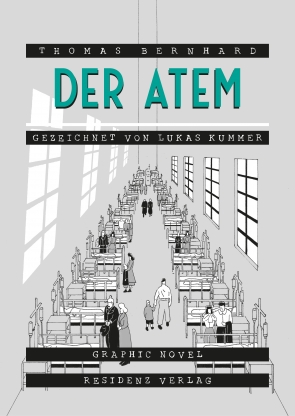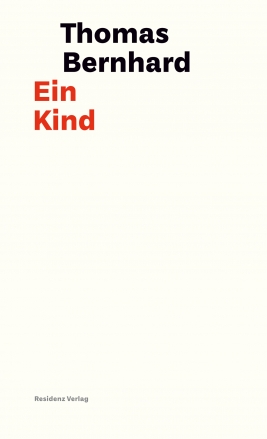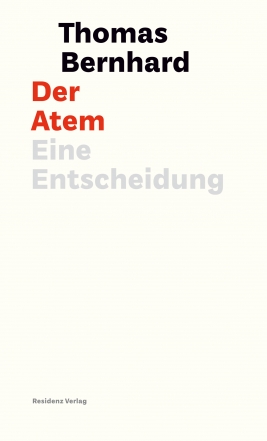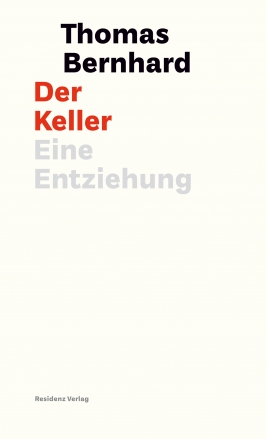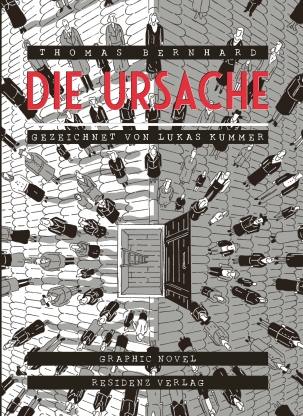Ein subtil brillant gestaltetes Lesebuch.
[Quelle: Die 15 schönsten Bücher Österreichs 2019]
Der gefeierte österreichische Künstler Erwin Wurm hat den Prachtband illustriert. Die Ausgabe ist ein gelungener Auftakt in das Thomas Bernhard Jahr 2019.
[Quelle: Florian Baranyi, ORF ZiB]
Die Zeichnungen von Wurm sind überraschend!
[Quelle: Peter Pisa, KURIER]
Diese Illustrationen werfen auch auf Wurm einen neuen künstlerischen Fokus.
[Quelle: Benedikt Fuchs, ORF Online]
(…) eine wunderschöne Ausgabe von Bernhards autobiografischen Romanen mit Aquarellen von Erwin Wurm.
[Quelle: NVB]
Die Buchwelt kann nicht genug Thomas Bernhard bekommen, das ist schon eindeutig so. Insofern: Chapeau liebe Residenzler, das tut ihr recht, uns lesehungrige mit weiteren Büchern des Meisters zu füttern, auch wenn es naturgemäß nichts wirklich Neues mehr sein kann, denn er ist ja schon eine Weile tot.
[Quelle: Frank Willmann, KULTUREXPRESSO.DE]
(…) das Warmherzigste, das der als zynisch verschriene Bernhard zu Papier gebracht hat. Die Illustratinoen des Künstlers Erwin Wurm, Porträts mit Aquarell sind hübsche Beigabe. (…) wuchtige, zarte, aufregende Autobiografie (…). Knapp 500 Seiten, ein Schatz.
[Quelle: pia, OÖ VOLKSBLATT]
Kein Geringerer als der österreichische Weltkünstler Erwin Wurm hat dafür ausdrucksstarke Porträts gemalt. Die pastellfarbenen Aquarelle verschaffen tiefe Einblicke in die Gedankenwelt des Schriftstellers. Die Abbildungen stimmen atmosphärisch dicht auf das jeweilige Werk ein und verdeutlichen zugleich exemplarisch die Lebensphasen des Schriftstellers. (…) Der Band ist – naturgemäß – lesenswert.
[Quelle: Susanne Zobl, NEWS]
(…) eine neue wie einzigartige Ausgabe. (…) Im Falle der Neuerscheinung Autobiographische Schriften hält man nun ein ganz besonderes Werk in den Händen. (…) Kein Geringerer als Superstar Erwin Wurm gestaltete zum Gedenken an den von ihm verehrten Thomas Bernhard den epochalen Sammelband. (…) Wer die Welt des Thomas Bernhard verstehen will, findet hier den Schlüssel. Wer dies bereits tut, sollte die Gelegenheit dennoch nutzen, um seine Bernhard-Sammlung um ein wundervolles Buch zu erweitern.
[Quelle: 80 KULTURZEITUNG]
Eine Ausgabe wie ein Kunstwerk.
[Quelle: Peter Grubmüller, ÖÖN]
Das Bild des 1989 verstorbenen Autors vervollständigen zarte Aquarelle von Erwin Wurm, der wie Bernhard zu den bedeutendsten Künstlern Österreichs zählt.
[Quelle: ASK, CRESCENDO]
Wurm zeichnet den harten, an die Grenzen des Ertragbaren gehenden Reifeprozess fast zärtlich, manchmal ironisch, aber immer mit großer Sensibilität.
[Quelle: BERLINER ZEITUNG]
Für dieses Buch steuert Wurm Aquarelle bei, die seinen Landsmann-Kopf betont zeigen in körperlicher Beiläufigkeit – fast so, wie Tragödie und Komödie zueinander stehen.
[Quelle: Janina Fleischer, DRESDNER NEUESTE NACHRICHTEN]
Das faszinierende Gewächs zum Jubeltag ist allerdings die Edition der fünf autobiografischen Romane mit den zärtlichen und grausamen Aquarellen von Erwin Wurm.
[Quelle: Heinz Sichrovsky, ORF ERLESEN]
Die jeweilige Stimmung der autobiografischen Schriften wird von Wurms Motiven auf den Punkt gebracht. Eine gelungene Kombination von Künstler trifft Künstler.
[Quelle: Michael Lausberg, SCHARF LINKS]
Die zusammengefassten Autobiographischen Schriften geben genug Gelegenheit sich mit Bernhards schwieriger Kindheit und Jugend zu befassen, sollte man meinen. Und greift dann, leidens- wie lesesüchtig, doch auch nach dem dicken neuen Broschurband, für den der Künstler Erwin Wurm zauberhafte Bernhard-Porträts schuf.
[Quelle: Wolf Ebersberger, NÜRNBERGER NACHRICHTEN]
